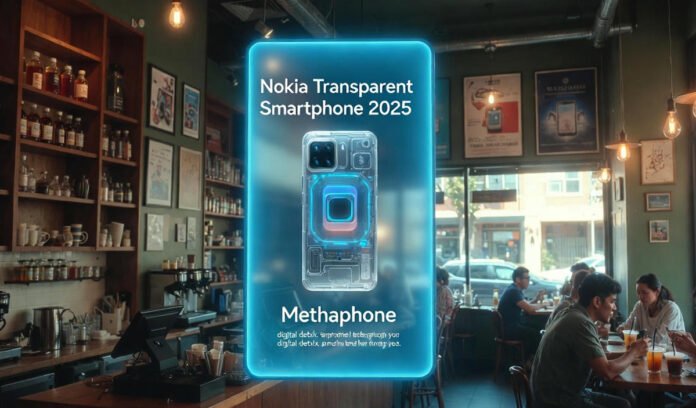New Delhi, November 14, 2025 — A dazzling new gadget has been hypnotizing the internet: the so-called “Nokia Transparent 2025.” Slick videos across X, YouTube, and TikTok showcase a futuristic glass-like smartphone boasting 18GB RAM, a sci-fi transparent body, and a $999 starting price that fans claim could “end the iPhone-Galaxy rivalry once and for all.”
The hype machine exploded overnight — amassing more than 50 million YouTube views and sparking a meme-and-reaction frenzy across India, where Nokia nostalgia still runs deep. Hindi tech reels even declared, “Yeh phone toh poora glass! Samsung ko khel khatam.”
But the truth behind the glimmering spectacle?
The phone doesn’t exist. It’s a full-scale AI-driven hoax.
The Viral Spark That Fooled the World
The frenzy began in early November when popular tech creators shared “exclusive unboxings” of a transparent Nokia device allegedly powered by a Snapdragon 8 Gen 5 chip, a 200MP see-through camera, and a mythical 15,600mAh battery.
The videos showcased:
Hollow glass panels revealing “internal components”
Holographic mid-air Zoom calls
Underwater tests with zero damage
Transparent UI animations
One viral clip, viewed over 10 million times, used looping hand movements and AI-rendered overlays — a dead giveaway for manipulated footage.
But viewers didn’t ask:
Why no Nokia announcement? Why no certification filings? Why no prototype leaks?
Social media blinded itself with hype.
The Real Device Behind the Deception
Our investigation — supported by fact-checkers and insider inputs — found that the “transparent smartphone” visuals trace back to a very real but very different gadget: the Nokia Clear Phone, launched quietly in May 2025 for just $29.
But here’s the twist:
The Clear Phone is not a smartphone.
It’s essentially a glass block shaped like a phone, created by HMD Global’s wellness division as an anti-addiction tool.
Dubbed the “Methaphone,” it’s designed to be a pocket reminder to disconnect from digital overload.
No apps.
No screen.
No electronics.
Just a transparent prop.
“Amusing, isn’t it? A phone that does absolutely nothing,” an HMD spokesperson joked on November 12. “It was meant to reduce screen time, not go viral as the next iPhone killer.”
AI Turbocharged a Simple Prop into a Global Hoax
Advanced AI video tools — including Runway ML and Sora — stitched realistic transparent-phone animations with fake specs, fictional hands-on clips, and recycled Nokia footage.
Fact-checkers moved quickly:
Snopes: “Pants on Fire”
FactCheck.org: “Fabricated Visual Content”
Nokia PR: “We love transparency. But not this kind.”
Even insider patent checks, lab leaks, and supply chain trails turned up empty — confirming this phone was never part of Nokia’s 2025 roadmap.
Why People Fell for It
Tech vlogger Raj Patel, who unknowingly pre-ordered a scam version for ₹500, admits, “I wanted it to be real. I mean, who doesn’t want a glass phone?”
Digital media experts say this incident exposes a deeper problem.
“2025 is the peak of the attention economy,” says Dr. Aisha Khan from Jamia Millia Islamia. “Deepfakes are now indistinguishable from reality. Virality has dethroned truth.”
Ironically, the hoax boosted actual Clear Phone sales by 300%, turning a wellness gag into a surprise bestseller.
















